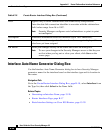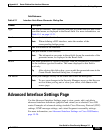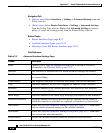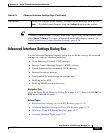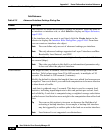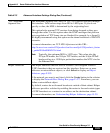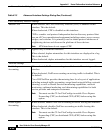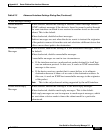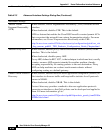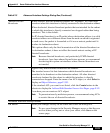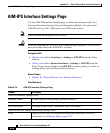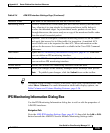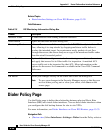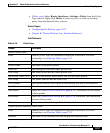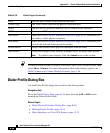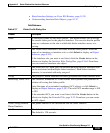
Appendix K Router Platform User Interface Reference
Advanced Interface Settings Page
K-32
User Guide for Cisco Security Manager 3.2
OL-16066-01
Additional settings
Enable Virtual
Fragment Reassembly
(VFR)
When selected, virtual fragmentation reassembly (VFR) is enabled on this
interface.
When deselected, disables VFR. This is the default.
VFR is a feature that enables the Cisco IOS Firewall to create dynamic ACLs
that can protect the network from various fragmentation attacks. For more
information, see Virtual Fragmentation Reassembly at this URL:
http://www.cisco.com/en/US/docs/ios/security/configuration/guide/sec_virt
_frag_reassm_ps6441_TSD_Products_Configuration_Guide_Chapter.html
Enable Proxy ARP When selected, enables proxy Address Resolution Protocol (ARP) on the
interface. This is the default.
When deselected, disables proxy ARP.
Proxy ARP, defined in RFC 1027, is the technique in which one host, usually
a router, answers ARP requests intended for another machine, thereby
accepting responsibility for routing packets to the real destination. Proxy
ARP can help machines on a subnet reach remote subnets without
configuring routing or a default gateway.
Enable NBAR Protocol
Discovery
When selected, enables network-based application recognition (NBAR) on
this interface to discover traffic and keep traffic statistics for all protocols
known to NBAR.
When deselected, disables NBAR. This is the default.
Protocol discovery provides a method to discover application protocols
traversing an interface so that QoS policies can be developed and applied to
them. For more information, go to:
http://www.cisco.com/en/US/products/ps6616/products_qanda_item09186a
00800a3ded.shtml
Table K-13 Advanced Interface Settings Dialog Box (Continued)



